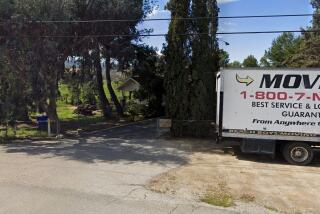Remains Exhumed for Tests to See if They’re Columbus’
- Share via
A chest containing remains that are supposedly those of Christopher Columbus was exhumed Monday in Spain for DNA and other tests to determine whether the bones are really those of the famed explorer.
The tests aim to settle a long debate over where Columbus is buried: in Spain’s Seville Cathedral or in a sprawling monument in the Dominican Republic’s capital, Santo Domingo.
In the presence of two descendants of Columbus -- Jaime and Anunciada Colon de Carvajal -- researchers removed two boxes from an ornate tomb at the cathedral in the southern city of Seville. One box is believed to hold the explorer’s bones; the other is known to hold those of his son Hernando.
Another box, thought to contain the bones of Columbus’ brother Diego, was exhumed close to Seville. All three were taken across southern Spain, with a police escort, to the University of Granada.
In Granada, experts will conduct an array of tests -- including DNA analysis -- to find out whether the two sets of remains in question are related to those of Hernando, whose identity is certain.
The results of the tests will not be known for several months.
Researchers have asked to exhume the Santo Domingo remains as well, but Dominican authorities are waiting on the outcome of the Spanish tests, said Marcial Castro, the researcher who started the project.
Columbus died and was buried in the Spanish city of Valladolid on May 20, 1506, although he had asked to be buried in the Americas.
In 1537, Maria de Rojas y Toledo, widow of another of Columbus’ sons, Diego, sent the bones of her husband and his father to the cathedral in Santo Domingo for burial. There they lay until 1795, when Spain ceded the island to France but decided Columbus’ remains should not fall into the hands of foreigners.
So a set of remains that the Spaniards believed were Columbus’ were shipped to Havana and, when the Spanish-American War broke out in 1898, over to Seville.
However, in 1877, workers digging in the Santo Domingo cathedral unearthed a leaden box containing bones and bearing the inscription, “Illustrious and distinguished male, don Cristobal Colon” -- as Columbus is called in Spanish -- thus sparking the controversy.
More to Read
Sign up for Essential California
The most important California stories and recommendations in your inbox every morning.
You may occasionally receive promotional content from the Los Angeles Times.













